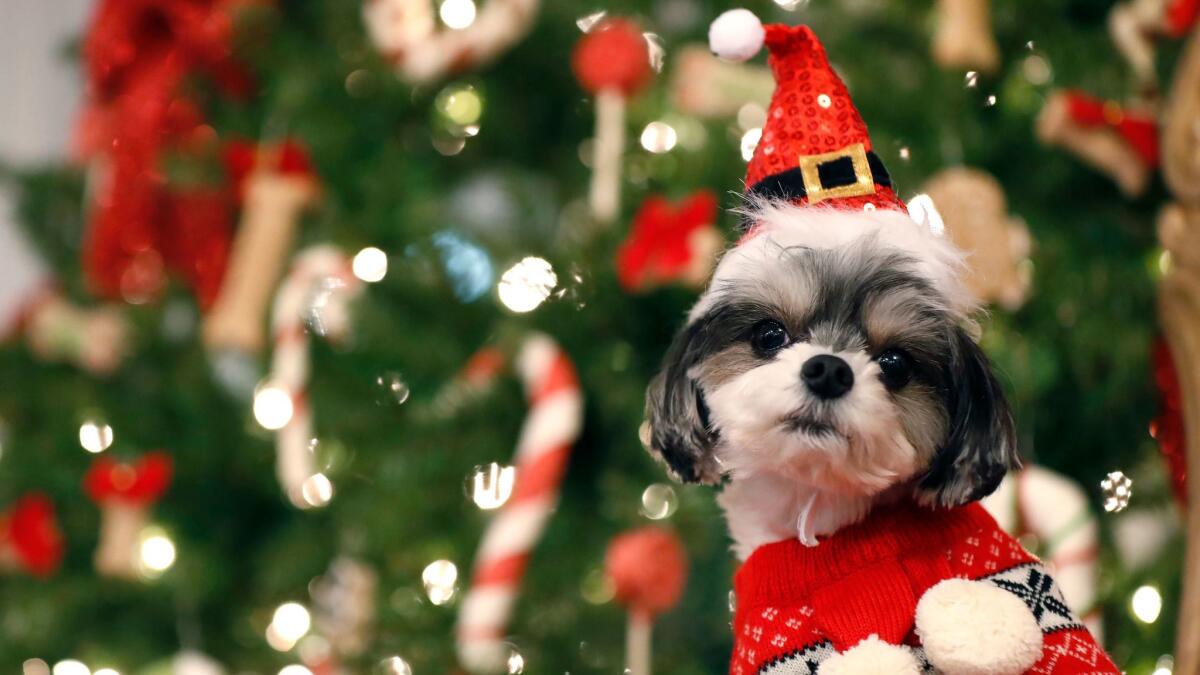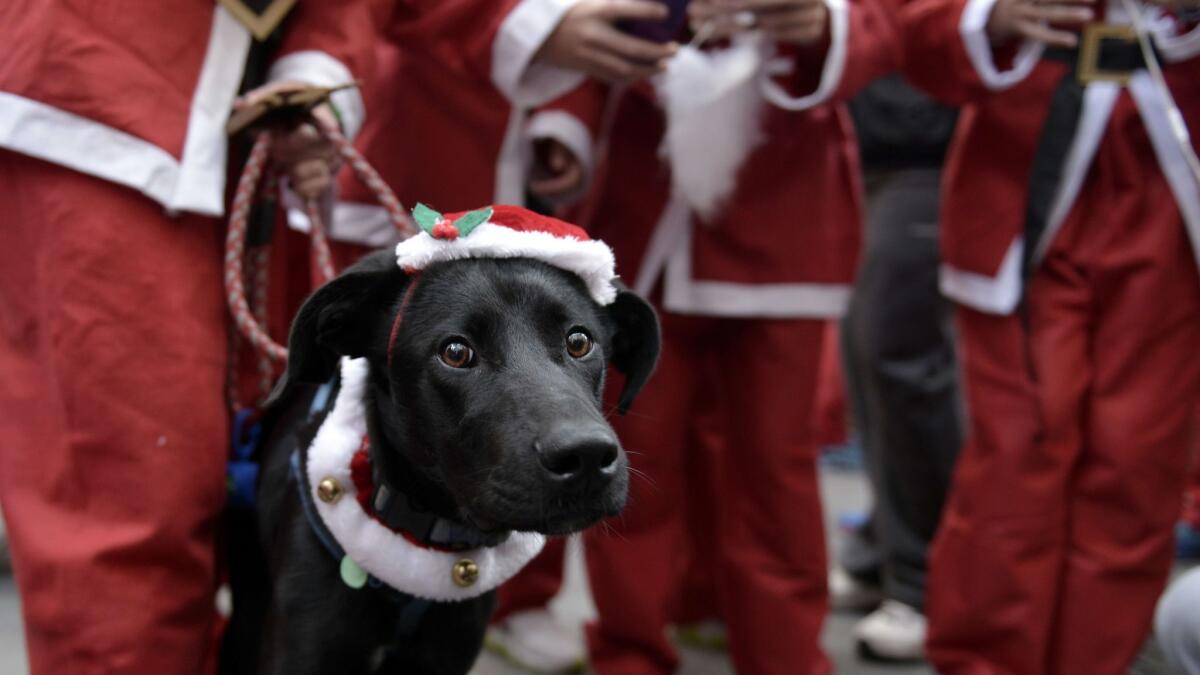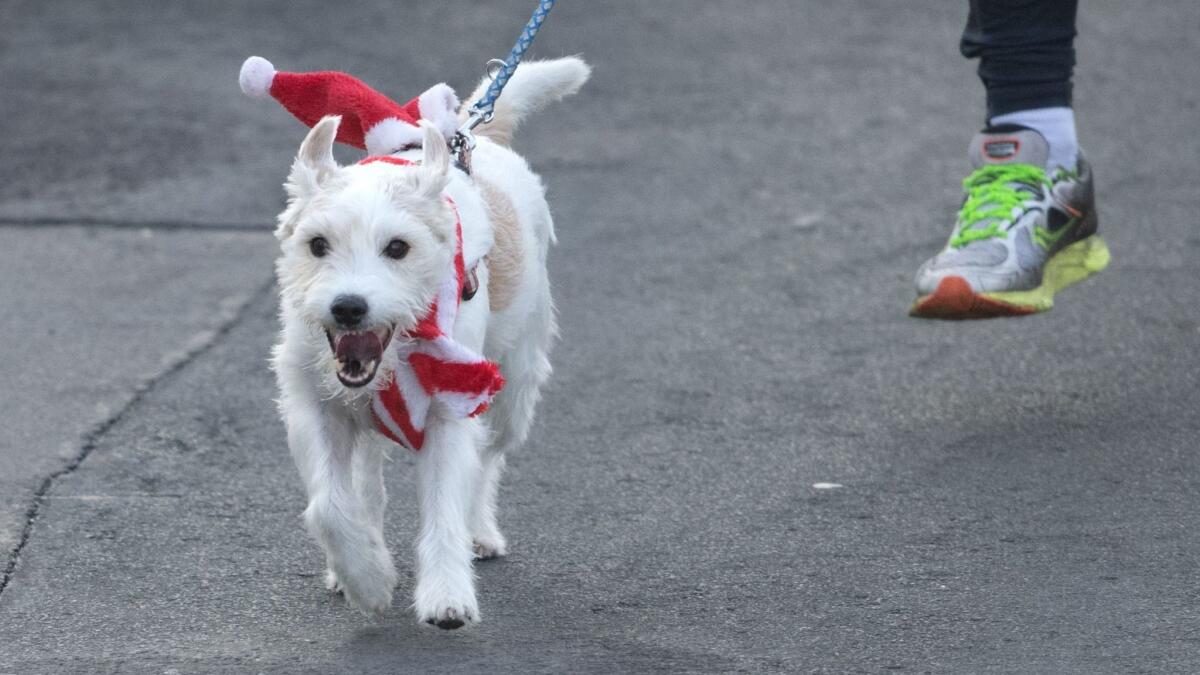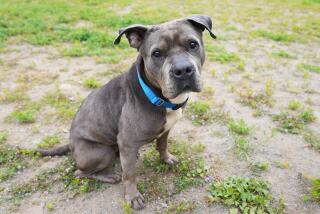It’s Christmastime, and that means dogs are now at peak risk of chocolate poisoning

- Share via
It may be the most wonderful time of the year for people, but it’s a time of peak peril for our pets.
Dogs, in particular, face a heightened risk of chocolate poisoning during the Christmas season. According to a new study, the risk is nearly five times greater than at holiday-free times of the year.
Researchers came to this conclusion by scouring patient records from 500 clinics that are part of the United Kingdom’s Small Animal Veterinary Surveillance Network. They reviewed 2.7 million records of dogs seen between November 2012 and May 2017 and identified 386 cases of “chocolate exposure” suffered by 375 animals.
The study authors, from the University of Liverpool, hypothesized that these illnesses were clustered around holidays known to feature chocolate: Christmas, Valentine’s Day, Easter and Halloween.
To see if this was indeed the case, they compared vet records during four “risk periods” — one week before and two weeks after each of the holidays — to records from other, “non-festival dates.”

Sure enough, they found that cases of chocolate poisoning were 4.74 times more common during the Christmas risk period than during less wonderful times of the year. In addition, the risk of chocolate poisoning nearly doubled during the Easter risk period compared with the holiday-free baseline.
According to the patients’ files, the most common sources of chocolate were candy bars and gift boxes (35 cases), followed closely by Easter eggs (31 cases). Chocolate cupcakes came in third (22 cases) and chocolate oranges were fourth (15 cases). A combined category of chocolate rabbits, Santa Claus figurines, Advent calendars and Christmas tree decorations accounted for another 10 cases of poisoning, and six more were blamed on Toblerone consumption. Then there were five dogs who consumed chocolate liqueurs and one who lapped up a hot chocolate drink.
Typically, the amount of chocolate consumed was deemed “small,” but the study authors noted one exception: a dog that ingested “a garden of Easter eggs hidden for a large party of children.”
Chocolate is dangerous for dogs (and cats as well) because it contains a chemical called theobromine, which comes from cocoa beans. Humans can metabolize this, but it’s not so easy for our four-legged friends. When too much of the chemical gets into their canine systems, the result can be seizures, tachycardia (an abnormally fast heart rate), vomiting or other problems.

None of the 386 poisoning cases in the U.K. study were fatal. But they were undoubtedly uncomfortable for the dogs. Nearly one-third of them (121 cases) were treated with activated charcoal to absorb the theobromine and reduce its circulation through the body. Activated charcoal is administered through a stomach tube or a large syringe.
About as many dogs (114) were treated with the drug apomorphine to induce them to vomit.
Intravenous fluids and antiemetics (drugs to counteract vomiting) were also reported in the treatment of a smaller number of cases.
The data suggest that chocolate-eating dogs have learned from their mistakes. Dogs considered “old” (past their eighth birthday) were 58% less likely to need treatment than their young counterparts (those who had not yet turned 4 years old), the researchers reported.
There was no relationship between dog breed and vulnerability, they added.
Studies from the United States and Germany have found spikes in chocolate poisoning around Valentine’s Day and Halloween, but this pattern did not hold up in the United Kingdom. That may be due to “alternate romantic gift choices (or more fastidious curation by their recipient) and different festival priorities,” the University of Liverpool team wrote.
But when it comes to Christmas, let there be no doubt: Dog owners should be extra careful not to leave chocolate lying around in reach of their furry friends.
The results were published this week in the journal Vet Record.
Follow me on Twitter @LATkarenkaplan and “like” Los Angeles Times Science & Health on Facebook.
MORE IN SCIENCE
Watch robots do chin-ups, push-ups and sit-ups for the sake of science
Gene-editing breakthrough found to minimize hearing loss in mice could help humans






